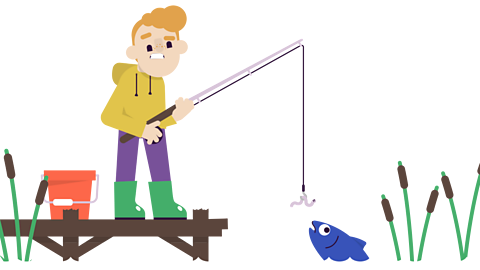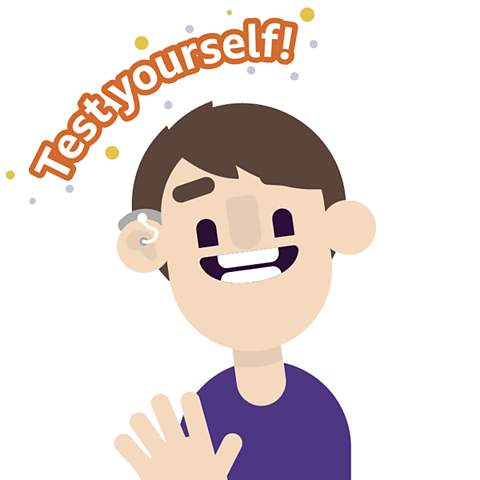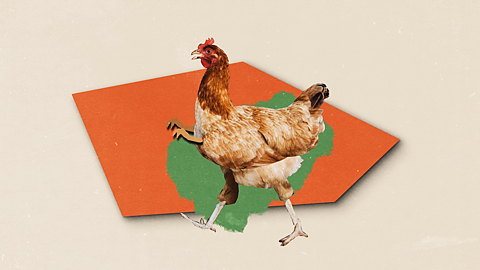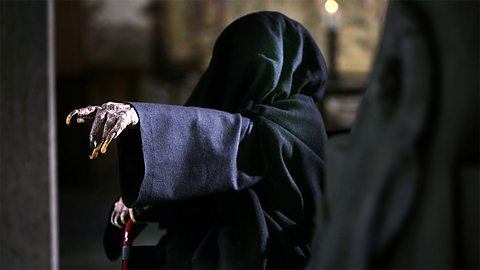Read this opening paragraph to a story
I found him in the garage on a Sunday afternoon. It was the day after we moved into Falconer Road. The winter was ending. Mum had said we'd be moving just in time for the spring. Nobody else was there. Just me. The others were inside the house with Doctor Death, worrying about the new baby.
How does the writer draw you in? What questions does it make you ask? Do you know this story?
This is an extract from Skellig by David Almond.
It makes you question: Who or what was it that was found in the garage? What is wrong with the baby?
Posing questions is one of the ways that an author can hook a reader in to the opening paragraph.
Introduction

First impressions count. The opening lines of a story need to engage the reader so that they keep reading.
Narrative hooks work to capture the readerâs attention â like a worm on a fishing hook attracts a fish.
Raising questions or setting a puzzle at the start of a story can create intrigue.
Establishing an unusual narrative voice or opening with dialogue creates interest.
These techniques also work in non-fiction writing, such as speeches, to grab the reader or listenerâs attention.
Video about how to hook a reader
Learn how to hook a reader's attention from the very start of your story
Narrative and character voices
One way to hook the reader might be to establish an interesting narrative voiceThe perspective the story is told from: the voice the reader âhearsâ in the writing. - perhaps one which addresses the reader directly to draw them in to the story. Kate Milfordâs Greenglass House begins like this:
Thereâs a right way to do things and a wrong way, if youâre going to run a hotel in a smugglerâs town. You shouldnât make it a habit to ask too many questions, for one thing. And you probably shouldnât be in it for the money.
Straightaway the reader seems involved in the story â the narrative voice encourages the reader to put themselves into the situation.
A strong character voiceThe unique way that a character in a story expresses themselves - both in their speech and in their thoughts. also appeals to readers. Readers care about characters so a hook that introduces an interesting main character encourages us to read further as we try to find out more about the character, their world views and how they act in different situations.
In The Book Thief by Markus Zusak, the narrator of the story doesnât say who or what they are, but we can infer from what they do say that they are not human:
First the colours.
Then the humans.
Thatâs usually how I see things.
Or at least, how I try.
° ° ° HERE IS A SMALL FACT ° ° °
You are going to die.
What's the hook?
Read the opening to Matilda by Roald Dahl. Why does this narrative voice hook you in?
Itâs a funny thing about mothers and fathers. Even when their own child is the most disgusting little blister you could ever imagine, they still think that he or she is wonderful.
This narrative voice hooks you in because it is unusual to hear people describe children in this way. The narrator has a very distinctive tone of voice.

Setting a puzzle
Another way to hook the reader is to raise some unanswered questions, setting them a puzzle. A writer might deliberately set the reader up to ask questions about the environment, or about a character. They might hide some information that will only get revealed later on.
For example, in Neil Gaimanâs The Graveyard Book, the reader is told:
There was a hand in the darkness and it held a knife.
The reader is already asking a number of questions â whose hand is it? Why is it holding a knife? What does âdarknessâ mean exactly here? Is something terrible about to happen? The information the reader is given is deliberately vague.
It is an effective hook because the reader wants to read more to get the answers to all of these questions.
Franz Kafkaâs The Metamorphosis also opens with a puzzling hook:
As Gregor Samsa awoke one morning from uneasy dreams he found himself transformed, in his bed, into a gigantic insect.
This example matter-of-factly states an idea that, when we look at it, is a bit odd. What on earth has happened to transform him? This encourages the reader to continue to read in order to find out.
Establishing atmosphere
Another approach is to introduce an unusual event or idea, straight away. In Nineteen Eighty-Four, George Orwell starts with an atmospheric hook:
It was a bright cold day in April, and the clocks were striking thirteen.
This surprising idea, that clocks are striking 13, is dropped into the sentence as if it is an everyday event. For the characters in this novel, it is, but for the reader it is odd and intriguing and makes them want to continue.
Kiran Millwood Hargrave begins The Girl of Ink & Stars:
They say the day the Governor arrived, the ravens did too. All the smaller birds flew backwards into the sea, and that is why there are no songbirds on Joya.
The reader may have no idea where or what âJoyaâ is, but an unsettling atmosphere has been created by the strange behaviour of the birds. The reader wants to know why the Governorâs arrival created such a strange reaction.
Find the odd one out
Which of these openings does NOT create an unusual atmosphere to hook the reader?
The first thing you find out when yer dog learns to talk is that dogs don't got nothing much to say. About anything.
The Knife of Never Letting Go by Patrick NessIt was an afternoon in late September. In the pleasant city of Stillwater, Mr. Popper, the house painter, was going home from work.
Mr. Popper's Penguins by Richard and Florence AtwaterJohnny never knew for certain why he started seeing the dead.
Johnny and the Dead by Terry Pratchett
Answer 2. It doesnât suggest anything unusual straightaway; it is deliberately creating an ordinary day.
Other ways to hook the reader
There are many other ways that a writer can grab the readerâs attention. Louis Sacharâs Holes uses a factual tone to reveal something a little surreal:
There is no lake at Camp Green Lake.
Other writers open in the middle of dialogue so that the reader is plunged into a conversation. For example, Charlotteâs Web by E.B. White begins:
âWhere's Papa going with that axe?â said Fern.
Other writers may open in the middle of the action. In Frances Hardingeâs The Lie Tree the family is heading to a new home by boat:
The boat moved with a nauseous, relentless rhythm, like someone chewing on a rotten tooth. The islands just visible through the mist also looked like teeth, Faith decided. Not fine, clean Dover teeth, but jaded, broken teeth, jutting crookedly amid the wash of the choppy grey sea.
Remember, whatever you choose, the narrative hook at the start of the story will help to set the tone for the rest of it. The reader should be encouraged to read further - to answer their own questions, to find out more about a character or situation, or even just to try and understand what is going on.
Test your knowledge
Play Bitesize secondary games. gamePlay Bitesize secondary games
Have fun playing science, maths, history, geography and language games.

More on Fiction writing
Find out more by working through a topic
- count1 of 8

- count2 of 8

- count3 of 8
